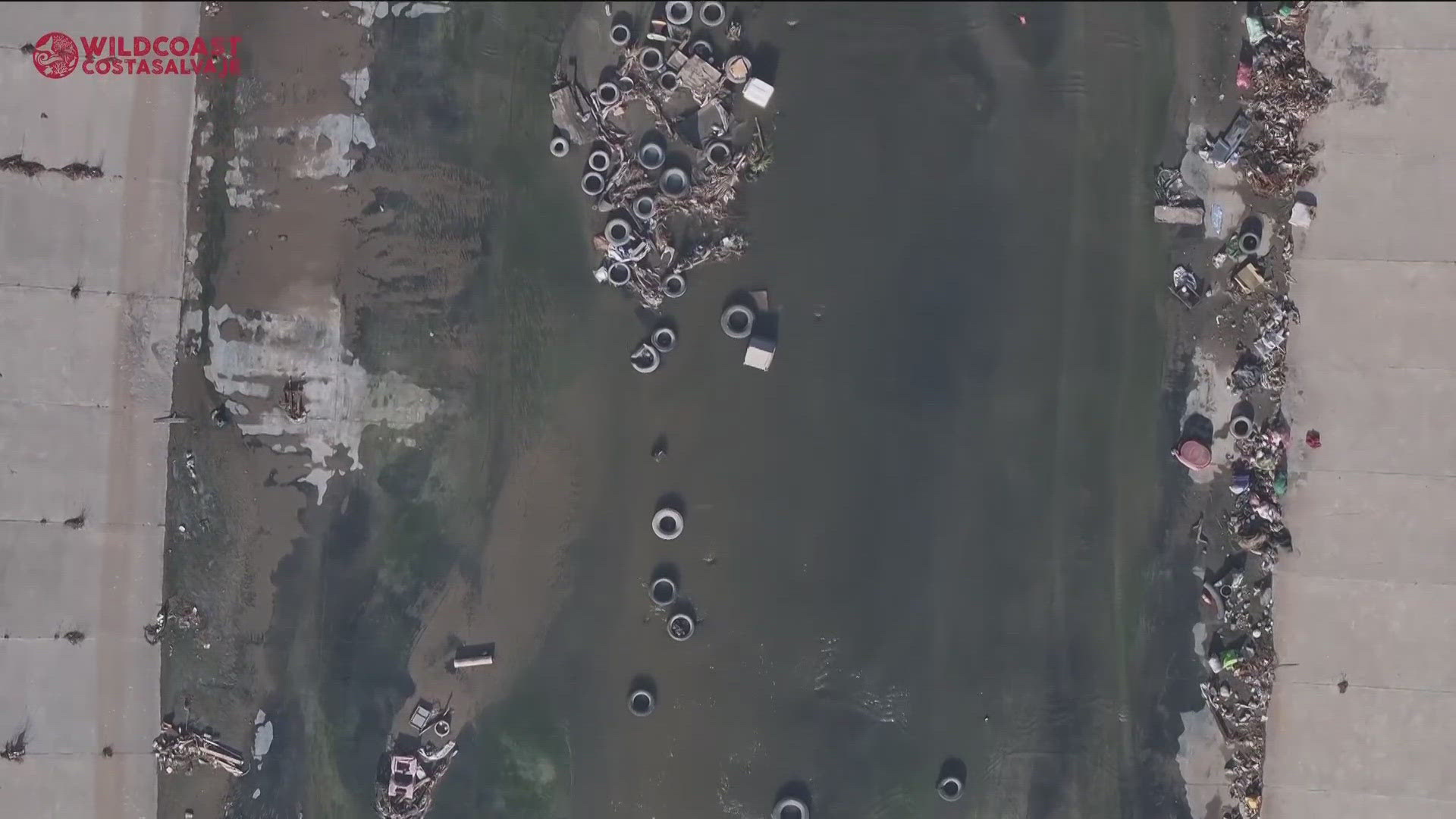SAN DIEGO — Volunteers with Wildcoast picked up thousands of pounds of trash yesterday, including plastic, tires, and other items.
The cleanup occurred in a Tijuana River Channel on the Mexican side of the border. Before yesterday’s cleanup, Wildcoast installed two trash booms in Tijuana that have collected 250,000 pounds of trash.
Anne Middleton is the Associate Director of Wildcoast. They are a Del Mar-based non-profit working to keep both sides of the border beautiful.
"We have to date, installed two trash booms in the concrete channels in Tijuana. They are big trash retention devices," Middleton shared.
But why are tires found in a river channel?
"There is no centralized waste collection, period," Middleton said. "So not just recycling but people have nowhere to put their trash and so it ends up in these channels which are tributaries of the Tijuana River and we're all part of the Tijuana River Watershed and pollution knows no borders."
She added, "The majority of the things we catch in those booms are plastic and tires. That trash ends up on the US side so we're doing what we can to stop it from crossing the border in the first place. There's no tire recycling facilities so what we do is we try to upcycle them by turning them into parks kids can play in."
The amount of contaminated water laced with raw sewage that is flowing across the US-Mexico border into San Diego County exceeded 44 billion gallons in 2023, according to the LA Times. By June of 2024, 33.55 billion gallons of polluted water had already flowed into the Tijuana River Valley and the Pacific Ocean.
That's the most on record in the last century according to a report by the US International Boundary and Water Commission or IBWC.
Clean-ups like this one yesterday with Wildcoast on the Mexican side of the border aim to help stop the trash flow.
"If we're not stopping it on the Mexico side it's going to end up in the US. When it rains all of the trash flows down through the neighborhoods and it gets collected. We've seen sofas, car parts, lots and lots of tires."
And it’s not just clean up, prevention is key.
"We're lucky because we work with community members to sort through, upcycle and recycle that waste as much as possible. Up to 85% of it is upcycled or recycled. The more we can collect in Tijuana the less is going to end up in that boom and it takes this massive collective effort to stop all this trash from getting into our communities, impacting our health, and then from a biological perspective, impacting the ecosystems that we know and love in Southern California."
The trash boom in Mexico looks like a big net that collects and stops anything that it can from flowing further into waterways. However, Middleton notes, that more help is needed from Mexico to help with waste management to stop that trash from flowing into the U.S.

